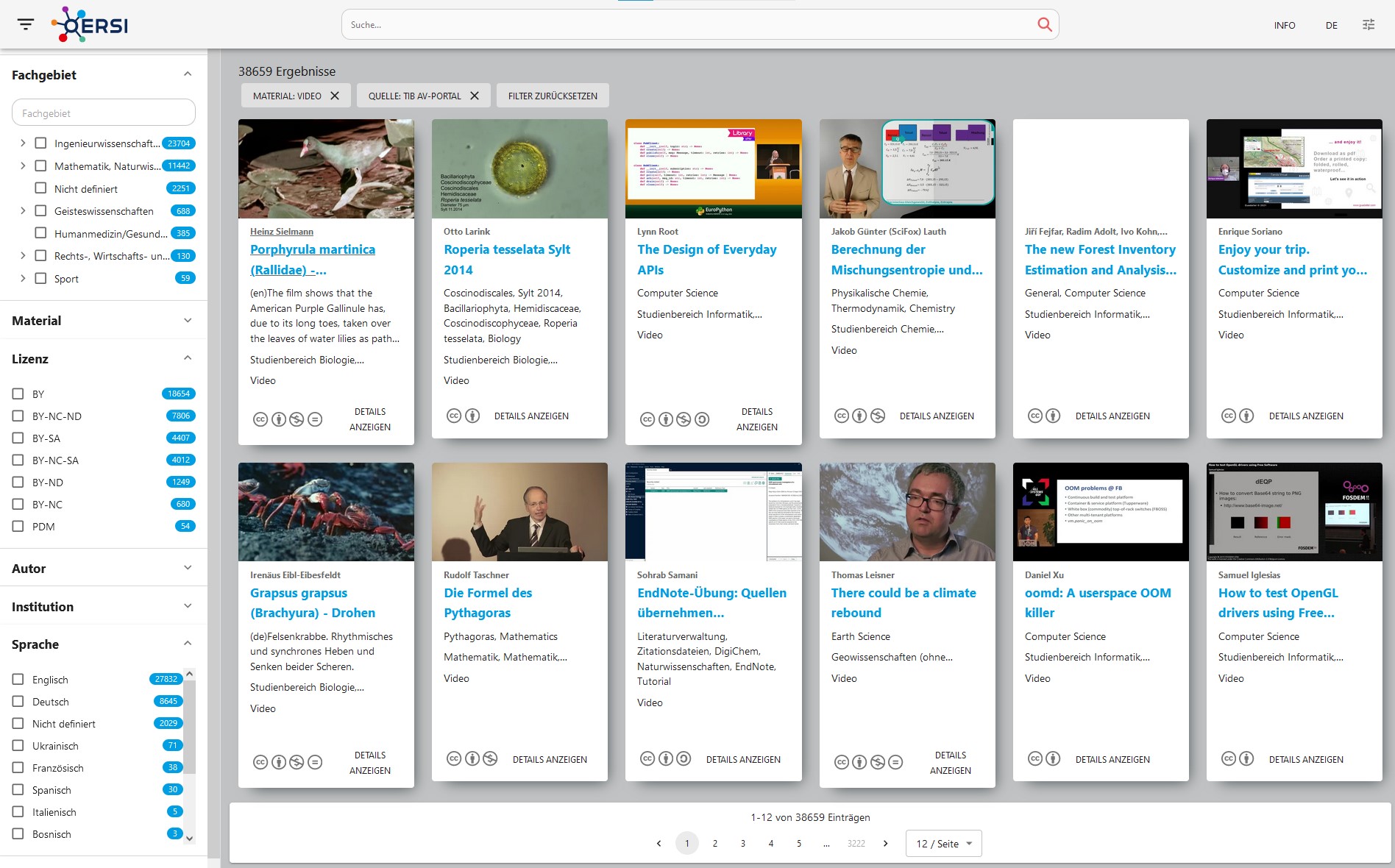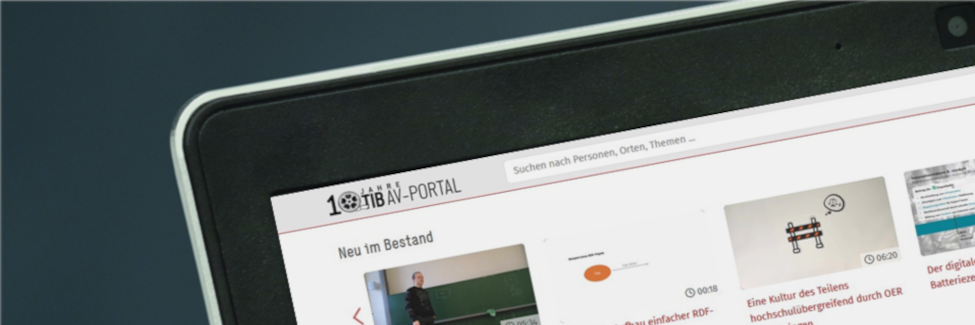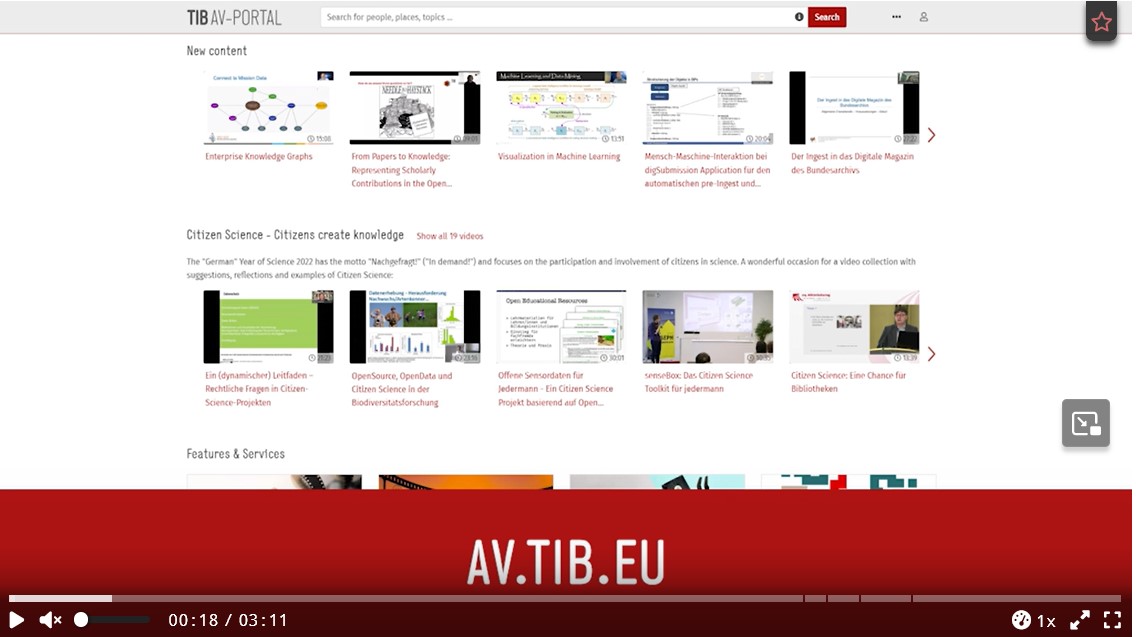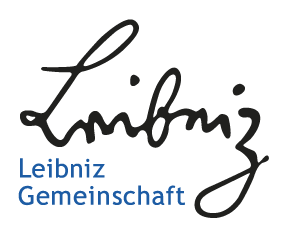Three questions put to Margret Plank and Matti Stöhr about the TIB AV-Portal
The TIB AV-Portal, the video portal of TIB, is celebrating its 10th anniversary this month. This is a great opportunity for us to talk to Margret Plank and Matti Stöhr about the portal. As head of the Lab Non-Textual Materials, Margret Plank has been responsible for the TIB AV-Portal from the very beginning, while Matti Stöhr has been supporting it as Community Manager since May 2020.
Congratulations on ten years of the TIB AV-Portal! A perfect occasion to take a look at the beginnings, the present and also the future of the TIB AV-Portal. Let‘s start with the beginnings: How did the idea for a video portal for science come about and what happened afterwards?

Margret Plank: When we started working on the topic of scientific film in 2010, our aim was to make scientific videos more accessible and usable. At that time, it was already clear that the TIB would take over the holdings of the former IWF Wissen und Medien gGmbH, i.e. holdings from 100 years of scientific film. In addition, the production of scientific videos in various formats was increasing rapidly, and even NASA launched a YouTube channel at the time.
The development of our portal focussed on user-friendliness and used expert interviews and environment analyses in the early stages. Our vision was a video portal that indexes the spoken language, text and image information in addition to the metadata: This would make videos just as searchable as a full text. Each video was to receive a DOI (Digital Object Identifier) and be citable to the second.
While analysing the environment, we came across a project by the Hasso Plattner Institute, which was working on a video portal for film archives together with the companies FlowWorks and Filmwerte. We then joined forces and created a prototype, which we tested with the company Usability.de at CEBIT 2013. The final product – the TIB AV-Portal – was launched in April 2014 with 2,000 videos.
 The TIB AV-Portal combines the best of different worlds. It combines best practice in scientific repositories, such as DOI, metadata standards and long-term archiving, with the usability of modern video platforms and is a pioneer in the use of automatic indexing through speech, text and image recognition.
The TIB AV-Portal combines the best of different worlds. It combines best practice in scientific repositories, such as DOI, metadata standards and long-term archiving, with the usability of modern video platforms and is a pioneer in the use of automatic indexing through speech, text and image recognition.
Bastian Drees, Head of the EMBL-Szilard Library and former Community Manager of the TIB AV-Portal
Matti Stöhr: In the years that followed, the TIB AV-Portal developed on many different levels in what can – spoiler alert – be seen as a success story. It was clear from the outset that the platform would not be limited to storing and (innovatively) making available the IWF‘s historical film heritage, which is still being intensively processed and edited today. Current scientific films in a wide range of genres – from conference recordings and educational films to video abstracts – have been and continue to be actively and successfully acquired in a targeted and sometimes campaign-like manner.

This was and is not trivial, because our credo is the binding, long-term clarification of copyright and personal rights. And, if possible, in the form of open Creative Commons licencing. Increasingly, more and more scientific institutions and individual researchers approached us with their videos, also and especially through intensive public relations and community work. By mid-2017, 10,000 videos were already available on the portal, and two years later 20,000. Since the end of 2022, well over 40,000 videos have not only been searchable and viewable, but most of them can also be reused extensively and flexibly thanks to open data.
In addition, following its initial launch in 2014 and other follow-up projects, the portal has been stabilised and established as a fundamental service of the TIB. Among other things, this “staying power“ makes it possible to continue the “state of the art“ development, which has been agile and iterative since the scrum team was founded in 2018. More on this in the following blog post by our Product Owner Sven Strobel. We can only spoil so much: just how much has changed in terms of “look and feel“ over the years, but how much has remained constant at its core, can be surmised by comparing the various tutorial versions of the TIB AV portal from 2014, 2016 and finally 2022.
And today? What makes the TIB AV-Portal special, how has it been received by users after ten years and what role do videos now play in science?
Matti Stöhr: The portal continues to impress with its ability to be cited to the second and the extensive reusability of the video content. The reliable, non-commercial character, especially the freedom from advertising, has also recently gained in importance. The automatic video analysis that has always existed – increasingly with the use of AI – is also unique in this form. Apart from the continuous growth in content already mentioned, we are of course very pleased that the TIB AV portal has been and continues to be increasingly recognised and used over the years.
The coronavirus pandemic in particular obviously acted as a “booster“, with around 695,000 visits in 2020 and even more than 810,000 in 2021 compared to 463,000 in 2019.
Videos, especially in science, have become increasingly popular, important and, above all, normal in recent years. Just think of relatively easy-to-record virtual and/or hybrid events, from individual lectures and workshops to entire conferences. This is still reflected in the AV-Portal today.
Learning with videos is also becoming more and more commonplace. We are publishing more and more explanatory videos and tutorials – most of them as open educational resources (OER). To illustrate this: while there were just under 600 videos published in 2019, almost twice as many have been added since 2020 alone, totalling over 1,100.

As part of open-access.network, I have now published more than 40 videos on the subject of Open Access via the TIB AV-Portal. Our videos are securely stored there for the long term and accessible worldwide – without any advertising or commercial interests in usage data.
Helene Strauß, employee in the BMBF project open-access.network
Margret Plank: Speaking of OER videos: They are a wonderful hook and a good example of the increased integration and dovetailing of the portal with other TIB services, above all with our OER portal twillo and the Open Educational Resources Search Index (OERSI). OERSI can be perfectly used to search for all videos identified as OER together with many other open educational materials.
In addition, the TIB AV-Portal and TIB ConRec, our service for conference recordings and scientific video production, together with TIB Open Publishing and ConfIDent form an integrated, modular service for scientific events. Another important point is that video content should not only be found via the portal, but should also be visible via various channels, information systems and platforms, sometimes curated in a targeted manner. Of course, this includes not only the TIB portal and K10Plus as a meta search, but also various (not only) specialised library databases such as the German Digital Library or, above all, Europeana.
The TIB AV-Portal has been one of the official Europeana aggregators since 2020 and the Lab NTM played a key role in the development of the Europeana Media Player. However, the visibility and searchability of science videos, which is also relevant in terms of quantity, and thus access to the portal, continues to be achieved primarily via search engines.

So those were the first ten years of the TIB AV-Portal to date. What will the next ten years of the AV-Portal possibly look like? What new features are planned, what challenges are there?
Margret Plank: In my opinion, the relevance of videos in science and teaching will continue to increase and the AV-Portal will play a central role in this. The next ten years will therefore be characterised by constant further developments and improvements. The rapid development and integration of artificial intelligence (AI), which can be used for new features and functions, will play an important role in this. There will also be a particular focus on user empowerment, such as the AI-based production of scientific videos. We also want to expand the account functions for needs-based and even more efficient use.
In terms of speed, the aim will be to further simplify and automate the publication workflow and rights clearance. However, challenges include dealing with “fake videos“ and automatically generated videos. It will therefore be crucial to improve mechanisms for determining the authenticity of content in order to ensure the quality and reliability of the portal.
The expansion of media partnerships and the development of exclusive content will make a major contribution to our growth and a sustainable service. Our aim is also to integrate the portal with other TIB services and develop it further. For example, we want to develop the TIB AV-Portal into a central hub for OER videos to enable and facilitate access to high-quality educational material. These numerous innovations and developments will help to make the portal an even more powerful and valuable service for our users.

Matti Stöhr: I can only agree with that. When I took over from Bastian Drees, now Head of the EMBL-Szilard Library in Heidelberg, in May 2020 and began my work and role as Community Manager and Editor for the TIB AV Portal, I found a really well-functioning, established system. To this day, I can build wonderfully on existing preparatory work, workflows and collaborations. At that time, certain activities and challenges – including those mentioned by Margret -– were already virulent, which are still important today and will continue to be relevant in the coming years and decades.
Although videos are a trend and reflect the spirit of the times: It is a long process to establish science films as “real“ scientific publications, including recognition in the scientific community. This is especially true in the sometimes very subject-specific culture of scientific work, publishing and communication as well as in the interdisciplinary breadth, but also for the commitment to Open Science. The TIB AV-Portal has always made a significant contribution to this and will continue to do so over the next ten years (and beyond) and, with a dynamically developing service and feature portfolio, is just as much in (constant) motion as videos themselves. It is and remains exciting.
The TIB AV-Portal – science in video format
Searching and publishing scientific videos: The TIB AV-Portal in 120 seconds – https://av.tib.eu/media/22006.
Find, use and publish scientific films: The TIB AV-Portal is the non-commercial platform for scientific films – for technology and natural sciences and far beyond.
- FIND: Find relevant video content with pinpoint accuracy. Various search functions – such as filters and recommendations – are combined with AI-based analysis methods for images, text and sound for the best possible search results.
- BENEFITS: Cite scientific videos and individual film segments as easily as texts – thanks to the Digital Object Identifier (DOI). Depending on the licence (Creative Commons), video content can be reused flexibly.
- PUBLISH: Publish videos easily and free of charge – for example via our upload form or cloud transfer. Professional metadata management, search engine optimisation and embed functions ensure maximum visibility.
More information and context can also be found in the topic introduction “Scientific Videos“
... ist seit 2012 Leiterin des Kompetenzzentrums für nicht-textuelle Materialien an der TIB. Dort werden innovative Infrastrukturen, Werkzeuge und Dienste entwickelt, um Open Educational Resources (OER), Wissenschaftsvideos, Forschungsdaten und wissenschaftliche Software besser nutzbar und zugänglich zu machen. Sie ist unter anderem für das TIB AV-Portal, das OER-Portal twillo und den Konferenzaufzeichnungsdienst TIB ConRec verantwortlich.
... arbeitet seit Mai 2020 an der TIB mit Schwerpunkt Wissenschaftskommunikation besonders als Community Manager für das TIB AV-Portal. // ... has been working at the TIB since May 2020, specialising in science communication, especially as Community Manager for the TIB AV-Portal.
... arbeitet seit 2012 als Pressereferentin in der Stabsstelle Kommunikation an der TIB.







2 Antworten auf “Three questions put to Margret Plank and Matti Stöhr about the TIB AV-Portal”